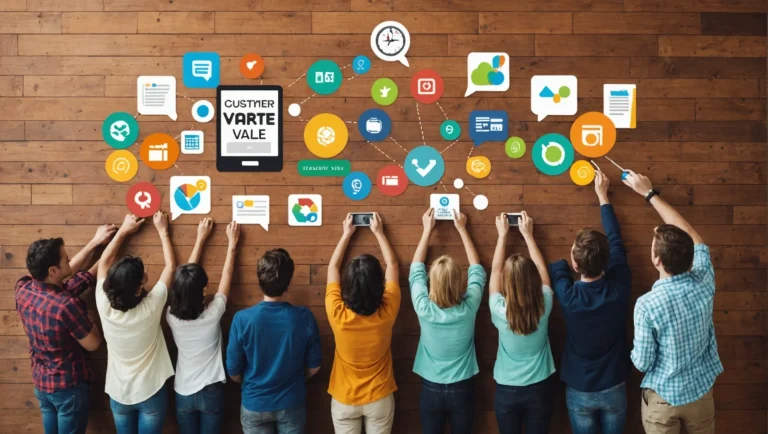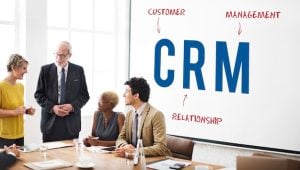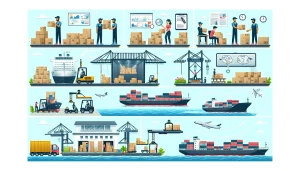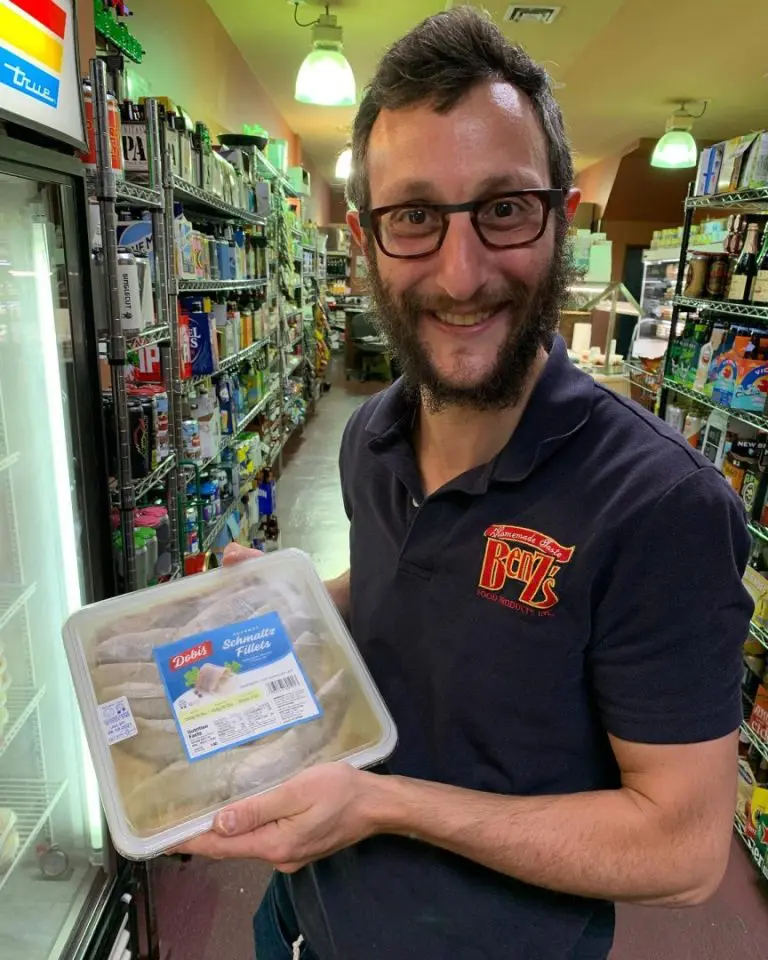Increasing the average customer lifetime value is no longer optional for business owners. It’s a necessity.
It directly impacts your bottom line. Simple steps like better onboarding, regular follow-ups, and feedback can work wonders.
From loyalty programs to customer acquisition cost advanced CRM tools, this guide covers everything.
Get ready to unlock effective strategies and tools to retain customers and boost their spending in 2024.
Strategies to Boost Customer Retention
Develop a Customer Onboarding Process
Welcome Emails and Training
-
Send a Personalized Welcome Email: Within 24 hours of a customer’s first purchase, send a welcome email. Use their first name and thank them for their purchase. Include useful information about your services or products—for example, tips on how to use their purchase effectively.
-
Provide Training Resources: Offer tutorials, guides, or webinars. These should help customers understand their products better. You can use video tutorials hosted on YouTube or documents available for download. This builds a connection and reduces return rates.
-
Personal Introductions and First Purchase Incentives: Assign a dedicated account manager or customer success person to new high-value customers. They can introduce themselves and offer a small discount on the customer’s next purchase. You can track the effectiveness of these introductions and incentives through your CRM system.
Regular Follow-Up Communications
Personalized Emails Based on Customer Behavior
-
Segment Your Customers: Use your CRM system to segment customers based on their buying behavior. Common segments include first-time buyers, repeat purchasers, and inactive customers. Each segment requires different communication strategies.
-
Tailor Your Messages: Send personalized emails that cater to these segments. For instance, send discount codes to inactive customers or product usage tips to new buyers. Use email marketing tools like Mailchimp for automation.
Special Offers and Updates
-
Monthly Newsletters: Keep customers updated with a monthly newsletter. Highlight new products, company news, and exclusive offers. Include a mix of educational content and promotions.
-
Seasonal Promotions: Send targeted emails during holidays or local events offering special deals. Analyze past purchase data to ensure the offers are relevant.
Customer Feedback Systems
Regular Surveys Post-Purchase
-
Send Automated Surveys: Send an automated survey to gather feedback after a purchase. Tools like SurveyMonkey or Google Forms can be used. Keep the survey short, no more than 5 questions.
-
Incentivize Feedback: Offer a small incentive, like a discount or entry into a prize draw, to encourage survey participation. This can increase response rates and provide valuable insights.
Implement Changes Based on Feedback
-
Analyze Survey Results: Regularly review feedback to identify common themes or issues. Use a CRM or analytics tool to track and analyze this data.
-
Make Adjustments: Implement changes that address customer concerns. If feedback suggests product packaging is an issue, consider revising your packaging material or design. Communicate these changes to your customers to show that their feedback is valued.
By following these strategies, businesses can actively increase customer lifetime value through enhanced retention practices. These steps involve initial engagement through effective onboarding, maintaining ongoing communication, measuring customer lifetime, and leveraging feedback systems. This ensures customers feel valued and engaged in business relationships, aligning their satisfaction with long-term loyalty. Discover how to optimize your customer acquisition costs by integrating these strategies, offering insight into reduced CAC and improved customer retention for sustainable growth.

Delivery notifications and tracking improve customer satisfaction by 27%.
Metrobi automatically notifies your receivers of ETAs, provides delivery tracking, and collects delivery feedback.
Effective Customer Loyalty Programs
Point-Based Loyalty Systems
Point-based loyalty systems give customers points for different actions like purchases, reviews, and referrals. These points can then be redeemed for discounts or gifts. This system is easy for customers to understand and can increase repeat purchases. Discover how establishing a point-based loyalty system can help your business reach its break-even point faster, enhancing customer retention and boosting sales.
Points for Purchases, Reviews, and Referrals
In a point-based system, customers earn points for every purchase they make. A typical program might offer one point per dollar spent. You can also reward customers for leaving reviews or referring friends. This encourages positive interaction with your brand. Discover how to maximize customer loyalty and profitability through effective point-based programs by understanding and applying the break-even point of your rewards system.
Redemption Options for Discounts and Gifts
Points can be redeemed for discounts on future purchases, exclusive products, or gift cards. Offering a range of redemption options makes the program appealing to a broader audience. The flexibility in redemption options can boost customer satisfaction.
Tiered Loyalty Programs
Tiered loyalty programs offer different levels with escalating benefits. This structure motivates customers to reach higher tiers by spending more.
Different Levels Offering Escalating Benefits
In a tiered system, customers move up through levels based on their spending. Each level provides better benefits, such as higher discounts, exclusive products, or premium customer service. For example, Starbucks offers free drinks and priority service to its top-tier members.
Use Tiers to Motivate Higher Spending
The promise of better rewards at higher tiers can drive customers to spend more. For instance, Sephora’s “Rouge” tier offers exclusive events and gifts, motivating customers to reach that level. The competition among customers to achieve a higher status can also foster a sense of community.
Personalized Rewards
Personalized rewards leverage customer data to offer individualized incentives. These rewards are based on purchasing patterns and preferences, making them highly relevant to each customer.
Use Customer Data to Tailor Rewards
Collecting and analyzing customer data allows you to understand their preferences. This data can include purchase history, browsing behavior, and even social media activity. By tailoring rewards to individual customers, you make the loyalty program more effective.
Special Deals Based on Purchasing Patterns
Offering special deals that align with a customer’s past purchases can significantly increase their loyalty. For example, if a customer frequently buys athletic wear, offering them a discount on new workout gear can be highly effective. This approach increases the perceived value and measures the high customer lifetime value of the rewards.
Exclusive Access Programs
Exclusive access programs provide members with VIP experiences. These can include early access to new products, exclusive events, or even behind-the-scenes tours.
Early Access to Products
Giving loyal customers early access to new products makes them feel valued. This exclusivity can drive further engagement and spending. Companies like Apple and Nike use early access to build hype and reward their most loyal and most valuable customers.
Exclusive Events and Experiences
Hosting exclusive events for loyal customers adds a unique touch to the loyalty program. These events can be online webinars, in-store meet-and-greets, or special shopping nights. Personal interaction helps build stronger relationships with your best customers.
Subscription-Based Models
Subscription-based loyalty programs charge a recurring fee for access to exclusive benefits. This model ensures consistent revenue and high customer engagement. Considering a subscription loyalty program for your business? Start by understanding the fixed expenses involved to ensure profitability and sustainability.
Consistent Revenue Stream
By charging a monthly or yearly fee, companies can secure a stable revenue stream. Amazon Prime is a prime example, offering free shipping and exclusive deals for an annual fee. A steady income helps businesses manage cash flow better.
Higher Customer Engagement
Subscribers are more likely to engage frequently with the brand to get the most out of their membership. Consistent interaction can lead to increased customer lifetime value formula as well. Providing high-value content and services keeps subscribers loyal and satisfied.
These programs tackle some of the essential questions on how to maximize and improve customer lifetime value. Personalized rewards and exclusive experiences leverage customer data to create a more tailored approach, while tiered and point-based systems offer straightforward ways to reward spending.
Maximizing Average Customer Spend
Upselling and Cross-Selling Techniques
Train Staff on Upselling Tactics
-
Conduct Training Sessions: Organize regular training sessions focusing on the importance of upselling. Use role-playing exercises to practice real-life sales scenarios.
-
Product Knowledge: Make sure staff know the products well. They should understand the features, benefits, and ideal customer profiles for each product. This helps in suggesting the right add-ons.
-
Highlight Benefits: Teach staff to emphasize the benefits of an upsell, not just the cost. For instance, if a customer is buying a laptop, suggest additional memory for better performance rather than just mentioning an upgrade.
-
Soft Skills Development: Invest in soft skills training. Polished communication, active listening, and empathy can significantly affect upsell success.
-
Monitor and Feedback: Implement a system to monitor performance. Provide constructive feedback to help employees improve. Set upselling goals and reward the top performers.
Automated Cross-Sell Options in E-commerce
-
Integrate AI Tools: Use AI-driven tools to automate cross-selling on your e-commerce platform. Tools like Recolize or Optimizely can analyze user data to recommend relevant products.
-
Data Analysis: Regularly analyze purchase patterns and browsing behaviors. This helps to make accurate cross-selling suggestions tailored to individual customers.
-
Strategic Placement: Place cross-sell suggestions on product pages, in the cart, and during the checkout process. For example, if someone is buying a camera, suggest a lens or camera bag.
-
Personalized Emails: Send follow-up emails with cross-sell recommendations based on recent purchases. For example, post-purchase emails can remind customers of accessories or complementary items they might need.
-
Track Success: Use analytics to track the performance of your cross-selling efforts. Identify which strategies are most effective and refine your approach accordingly.
Bundling Products and Services
Create Value Bundles of Popular Products
-
Identify Popular Products: Use sales data to identify best-selling products. Pick items that customers frequently buy together or complement each other well.
-
Bundle for Value: Combine these products into bundles that provide value. For instance, bundle a laptop with a case and mouse at a discounted price.
-
Marketing the Bundle: Promote these bundles on your website, social media, and email campaigns. Highlight the savings and added convenience customers get by buying the bundle.
-
Customer Feedback: Collect feedback on the bundles. Adjust based on preferences and purchase patterns. Use customer surveys to identify potential new bundles.
-
Regular Updates: Keep bundles fresh and seasonal. Update them regularly to keep up with trends and seasonal demands.
Seasonal or Thematic Bundles for Higher Appeal
-
Analyze Trends: Look at seasonal trends and customer behavior during different times of the year. Use this data to create relevant bundles.
-
Theme-Based Bundles: Create bundles around popular themes. For example, holiday gift bundles, back-to-school packages, or summer essentials.
-
Marketing Campaigns: Design marketing campaigns around these bundles. Use festive or thematic visuals and messaging to attract attention.
-
Price Incentives: Offer slightly higher discounts on seasonal or thematic bundles to entice purchase. Limited-time offers create urgency.
-
Post-Purchase Engagement: Follow up with customers who purchased seasonal bundles. Collect feedback to improve future offerings.
Personalized Product Recommendations
Use AI to Suggest Relevant Products
-
Implement AI Tools: Use AI-driven recommendation engines like Froomle or Dynamic Yield. These tools analyze customer behavior and preferences to suggest relevant products.
-
Gather Data: Collect data from various touchpoints like website visits, purchase history, and customer surveys. More data improves the accuracy of recommendations.
-
Real-Time Suggestions: Show product recommendations in real time on your website. Place them strategically on product pages, the homepage, and during checkout.
-
Feedback Loop: Implement a feedback loop where customers can rate the relevance of recommendations. Use this feedback to improve algorithms.
-
AB Testing: Regularly perform AB testing on recommendation algorithms to compare effectiveness. Continuously refine to achieve the best results.
Personalized Email Campaigns with Recommendations
-
Segment Customers: Segment your customer base based on their purchase history, browsing behavior, and demographics.
-
Tailored Messages: Create personalized email content for each segment. For example, send tailored product recommendations to someone who recently bought a smartphone.
-
Dynamic Content: Use dynamic content in emails that change based on user interactions and preferences. For instance, showcase trending products similar to their past purchases.
-
Frequency and Timing: Optimize the timing and frequency of your emails. Use past data to determine the best times to send emails for maximum engagement.
-
Track Metrics: Monitor key metrics like open rates, click-through rates, and conversion rates. Use this data to refine and improve future email campaigns.
Maximizing average customer spend is a vital part of increasing customer lifetime value. By focusing on upselling and cross-selling techniques, creating valuable product bundles, and using personalized product recommendations, you can make average customers spend their purchases and significantly enhance your revenue.
Applying these strategies will not only boost your average order value and customer spending but also build stronger customer relationships, ensuring high customer lifetime and long-term business growth.
Customer Lifetime Value: Innovative Customer Relationship Management Tools
CRM Software to Track Customer Interactions
Keeping track of how customers interact with your business is key to increasing customer lifetime value. CRM (Customer Relationship Management) software like Salesforce and HubSpot helps organize this information in one place. By recording each interaction, your team can understand customer preferences, previous issues, and future needs.
Recording and Analyzing Customer Data
CRM systems allow businesses to record customer details such as contact information, historical customer transactions, and communication logs. This data serves as the foundation for personalizing customer interactions. For instance, companies can tailor follow-up messages based on a customer’s past purchases. Analyzing this data can help identify trends. For example, a sales spike during the holiday season may prompt a focused marketing campaign.
CRM software isn’t just for sales teams. It can also aid in providing better customer service by offering a 360-degree view of customer interactions.
Automating Reminders for Follow-Up Actions
CRM systems can also automate reminders, ensuring that no customer is forgotten. For example, automated emails can be scheduled to follow up after a purchase or service interaction. This automation reduces the manual workload and ensures consistency in customer communication.
Analytics Tools for Customer Behavior Insights
Understanding customer behavior is essential for creating more value. Analytics tools like Google Analytics and Kissmetrics offer insights into how customers interact with your website and products. These tools can identify purchasing trends and preferences, allowing for better-targeted marketing campaigns.
Identifying Purchasing Trends and Preferences
Analytics tools can track various metrics, such as the most viewed products, conversion rates, and abandoned cart instances. These insights help identify what products are popular and what areas need improvement. For example, if a product has a high view rate but a low purchase rate, it might require a better description or user reviews to increase conversion.
Segmenting customers based on their behavior allows for more focused marketing efforts. You can create segments like “frequent buyers,” “deal seekers,” or “new customers” and tailor campaigns accordingly to customer segments. This segmentation ensures that each customer receives relevant content, thereby improving their overall experience and increasing their average lifetime value further.
Chatbots and AI for Customer Support
In today’s fast-paced world, customers expect quick and efficient support. Chatbots and AI-driven customer support tools like Zendesk and Intercom can provide 24/7 customer service, ensuring that queries are addressed promptly.
24/7 Customer Service via Chatbots
Chatbots can handle routine queries such as order status, return policies, and basic troubleshooting, freeing up human agents for more complex issues. For example, Domino’s uses a chatbot to take pizza orders, allowing customers to place orders anytime.
Personalized Support Using AI-Driven Insights
AI can also help provide personalized support by analyzing customer data. Tools like IBM Watson can study past interactions and suggest personalized solutions. This customization improves customer satisfaction and retention. “Satisfaction is a rating. Loyalty is a brand,” says Shep Hyken. This loyalty translates predictive customer lifetime value into higher customer lifetime value.
Email Automation for Customer Engagement
Email remains a powerful tool for customer engagement. Automation tools like Mailchimp and ActiveCampaign allow businesses to send targeted emails based on customer behavior. These tools can personalize content, schedule emails, and track open rates, providing insights into which campaigns are most effective.
Personalizing Email Content
Personalization goes beyond adding a customer’s name to the email. It involves tailoring the entire message to suit the recipient’s preferences and purchase history. For instance, a customer who frequently buys running shoes could receive an email featuring the latest models, along with tips for running.
Scheduling and Tracking Performance
Automated tools can schedule emails for optimal times, ensuring higher open and engagement rates. For example, emails sent during lunch hours may have better open rates as people are likely to check their phones. Tracking metrics like open rates and click-through rates helps refine future campaigns for better results.
Integration with Quoting Tools
Integrating CRM with quoting tools like QuoteWerks or PandaDoc streamlines the sales process. These integrations allow for quick and accurate estimates, directly pulling in customer data from the CRM. This not only saves time but improves accuracy and professionalism.
Streamlining the Sales Process
The integration allows sales teams to generate quotes faster and follow up seamlessly, thus improving their efficiency. Roger Cole notes, “If you want to provide a better service to your entire customer base, you have to be able to manage everything from complaints to sales opportunities.”
Enhancing Customer Experience
An efficient quoting process contributes to a better customer acquisition experience. Clients appreciate receiving quick and accurate quotes, which can often tip the decision in your favor. This streamlined process ensures higher conversion rates and, ultimately, increased customer lifetime value.
By leveraging these CRM tools and techniques, businesses can increase customer lifetime value efficiently and effectively. Investing in the right tools will set the stage for enhanced customer relationships and more substantial long-term profits. “Finding a new customer costs from three to seven times more than keeping an existing customer by one,” says Price Waterhouse Coopers, emphasizing the value of retaining existing customers.
Current Trends in Customer Lifetime Value (2024)
Growth in Subscription-Based Models
Growth in Subscription Services
Subscription-based models have seen significant growth in the past year. More companies are adopting them, ranging from media services to consumer goods. Understanding the cost of goods sold is pivotal for subscription-based businesses, as it directly impacts pricing strategies and profitability.
In early 2024, smaller businesses began to follow suit. January saw an influx of local businesses offering subscription boxes for various products.
Benefits: Predictable Revenue and Higher Retention
By March 2024, reports showed that subscription models provided companies with predictable future revenue and streams, customer acquisition costs, and higher retention rates.
What I’d do next is encourage customers to consider introducing or expanding subscription services if your company hasn’t done so. It’s crucial to offer value that keeps customers engaged, such as exclusive content or early product access.
Emphasis on Sustainability
-
Companies adopting green practices appeal to conscious consumers
-
Marketing sustainability as part of customer value
Adopting Green Practices
Over the last year, the shift towards sustainable practices has increased. In May 2023, large companies like Unilever and Nestle committed to reducing their carbon footprints with ambitious goals. By July 2024, industry data indicated that over 40% of consumers actively sought out brands with sustainable practices.
Many companies adopted green certifications in the first half of 2024. These certifications helped market their commitment to sustainability, appealing to eco-conscious consumers.
Marketing Sustainability
Marketing sustainability became a major trend by August 2024. Companies not only adopted green practices but also made them a key part of their marketing strategies.
What I’d do next is to integrate sustainability into your product lifecycle and marketing campaigns. Highlight the environmental benefits of your products to attract and retain eco-conscious customers.
Enhanced Customer Experience (CX) Focus
-
Investment in improving CX through technology
-
Importance of seamless multi-channel experiences
Investment in Technology
Improving customer experience through technology has been a significant focus in 2024. In October 2023, companies invested heavily in AI and machine learning to enhance CX. By January 2024, over 60% of businesses reported adopting new technologies to improve customer interactions.
March 2024 saw the introduction of more interactive and user-friendly chatbots.
Seamless Multi-Channel Experiences
The importance of providing seamless experiences across multiple channels has been underscored throughout the year. By April 2024, omnichannel strategies were a must-have for businesses.
Multi-channel experiences were enhanced through synchronized online and offline services. For example, in July 2024, retail companies improved their in-store pick-up services tied to online orders, resulting in a 25% increase in customer usage.
What I’d do next is review your current customer touchpoints and ensure they offer a cohesive experience. Invest in technology that enables better service and seamless transitions between online and offline interactions.
The next 12 months are expected to continue these predictive and customer lifetime value calculation amount trends. Investing in subscription services, sustainable practices, and top-notch customer experience technology will be pivotal. This comprehensive look at customer lifetime value trends can help you shape strategies for the future.
Predictions for Increasing Customer Lifetime Value CLV in 2025
More Advanced AI in Customer Interactions
AI Becoming More Integral in Personalizing Customer Experiences
Over the past year, AI has become a fundamental part of personalizing customer interactions. By integrating AI technologies, companies have been able to deliver more customized experiences. For instance, AI-powered chatbots now offer immediate and personalized responses to customer inquiries, mimicking human-like conversations. Tools like IBM Watson and Google’s Dialogflow have seen widespread adoption, enhancing customer service responsiveness and quality. Discover how implementing AI can streamline your business’s operations and fine-tune fixed expenses by optimizing resource allocation in customer service.
As we move into 2025, expect AI to further evolve. Companies will leverage AI not only for customer service but also for personalized marketing campaigns. By analyzing customer behavior data, AI can provide tailored product recommendations and dynamic content. This level of personalization increases the likelihood of repeat purchases and strengthens customer and brand loyalty.
Greater Use of Augmented Reality (AR)
AR Helping Customers Visualize Products
In the last 12 months, AR has progressed rapidly in the retail and e-commerce sectors. Brands like IKEA and Shopify have incorporated AR into their apps, allowing customers to visualize how products will look in their homes before making a purchase. This has led to higher customer satisfaction and lower return rates, as customers have clearer expectations.
In 2025, AR technology will be even more refined and more widely used. Retailers will offer AR experiences directly on their websites and mobile apps, enabling customers to interact with products in a virtual space. This immersive experience can significantly influence purchasing decisions and increase customer lifetime and average purchase value by improving the overall shopping experience.
Expansion of Hyper-Personalization
Fully Personalized Customer Journeys
Hyper-personalization has evolved from simple name greetings in emails to creating comprehensive, individualized customer journeys. This past year, companies have started using machine learning algorithms to analyze detailed customer data and create unique experiences. Marketers now track customer behaviors across multiple touchpoints to better understand preferences and predict future behavior.
In 2025, hyper-personalization will become the norm. Businesses will use data not just to tailor emails but to affect every aspect of the customer journey. This includes customized website content, product recommendations, and special offers. Hyper-personalization increases engagement by making customers feel valued and understood.
Increased Integration of Social Commerce
Rise of Shopping Within Social Media Platforms
Social commerce has gained momentum in 2024, with platforms like Instagram, Facebook, and Pinterest adding shopping features. Consumers can now shop directly from social media posts without leaving the app, offering a seamless and convenient experience. Social commerce harnesses the power of social proof, as users can see real-time reviews and endorsements from their peers.
Looking ahead to 2025, social commerce will become even more prominent. More brands will set up virtual shops on social media platforms, capitalizing on the massive user base. Social media algorithms will optimize shopping experiences, showing users products they are likely to purchase based on their interactions and interests.
By understanding these trends and adapting accordingly, businesses can significantly boost their customer lifetime value in the upcoming year.
Wrapping Up: Your Path to Boosting Customer Lifetime Value
Building stronger customer bonds is not just about keeping them around. It’s about making their experiences memorable. We’ve talked about personalized onboarding, loyalty programs, and smart upselling. We’ve also looked at using data and AI tools to keep customers coming back.
All these strategies matter because they help you understand and serve your customers better. Start by refining your onboarding emails. Next, tailor your rewards to fit customer preferences. Don’t forget to look into CRM tools that automate your follow-ups.

